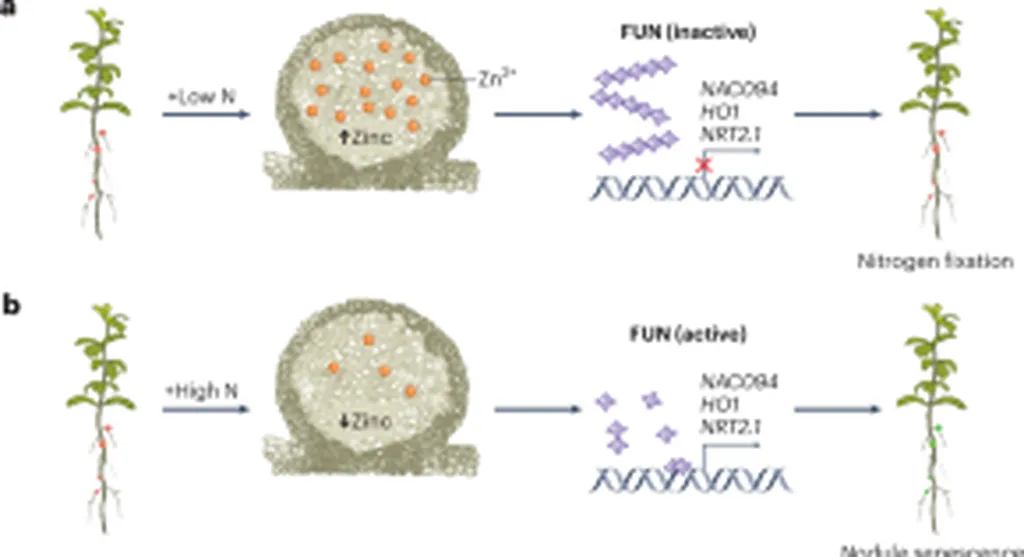In the relentless battle against rice bakanae disease (RBD), a scourge that threatens rice crops worldwide, a glimmer of hope emerges from the labs of Anhui Agricultural University. Researchers, led by Yang Sun, have uncovered promising potential in a novel fungicide, cyclobutrifluram, to combat the disease caused by the pathogen Fusarium fujikuroi. The study, published in the Journal of Integrative Agriculture (translated as “综合农业学报”), not only highlights the efficacy of this new succinate dehydrogenase inhibitor (SDHI) but also delves into the mechanisms of resistance, offering a comprehensive understanding that could shape future agricultural practices.
Rice bakanae disease is a devastating plant disease that can lead to significant yield losses, posing a substantial threat to global food security. The study conducted by Yang Sun and colleagues aimed to evaluate the potential of cyclobutrifluram in controlling RBD and to determine the risk and mechanism of resistance to this fungicide in F. fujikuroi. The findings are nothing short of encouraging. “Cyclobutrifluram significantly inhibited mycelial growth and spore germination, and altered the morphology of mycelia and conidia,” Sun explained. This inhibition was observed in vitro, where the fungicide demonstrated a strong protective effect against F. fujikuroi, outperforming other commonly used fungicides like phenamacril and azoxystrobin in pot experiments.
The baseline sensitivity of 72 F. fujikuroi isolates to cyclobutrifluram was determined, revealing a range of EC50 values that underscored the fungicide’s potency. The mean EC50 values for mycelial growth and spore germination inhibition were (0.0410±0.0470) and (0.0038±0.0015) μg mL–1, respectively, indicating a high level of effectiveness. “The protective effect of cyclobutrifluram against F. fujikuroi was more significant than that of phenamacril and azoxystrobin,” Sun noted, highlighting the fungicide’s potential as a powerful tool in the fight against RBD.
However, the story doesn’t end with efficacy. The researchers also explored the risk of resistance development, a critical factor in the long-term success of any fungicide. Six cyclobutrifluram-resistant mutants of F. fujikuroi were obtained through fungicide adaptation. These mutants exhibited weaker fitness than their parental isolate and showed positive cross-resistance with other SDHI fungicides, such as pydiflumetofen and penflufen. Notably, no cross-resistance was detected with other classes of fungicides, suggesting a moderate resistance risk.
Sequencing analysis revealed specific mutations, including H248D in FfSdhB, A83V in FfSdhC2, and S106F and E166K in FfSdhD, which contributed to resistance. These findings were confirmed through molecular docking and homologous replacement experiments, providing a deeper understanding of the resistance mechanisms. “The results suggest a high potential for cyclobutrifluram to control RBD and a moderate resistance risk of F. fujikuroi to cyclobutrifluram,” Sun concluded, emphasizing the importance of these findings for the scientific application of cyclobutrifluram.
The implications of this research are far-reaching. For the agricultural sector, the discovery of cyclobutrifluram’s efficacy against RBD offers a new line of defense in protecting rice crops, which are a staple food for over half of the world’s population. The understanding of resistance mechanisms and the moderate resistance risk associated with cyclobutrifluram provides a roadmap for developing strategies to prolong the fungicide’s effectiveness and mitigate resistance development.
As the global population continues to grow, the demand for food security becomes increasingly critical. Innovations like cyclobutrifluram, coupled with a thorough understanding of resistance mechanisms, are essential for ensuring sustainable agricultural practices. The work of Yang Sun and his team at Anhui Agricultural University represents a significant step forward in this endeavor, offering hope for a future where rice crops can thrive despite the threats posed by devastating diseases like RBD.
In the broader context, this research underscores the importance of investing in agricultural science and technology. The findings not only have immediate practical applications but also pave the way for future developments in the field. As we navigate the challenges of climate change, population growth, and food security, the insights gained from this study will be invaluable in shaping policies and practices that promote sustainable agriculture and global food security.
The study, “Activity of fungicide cyclobutrifluram against Fusarium fujikuroi and mechanism of the pathogen

